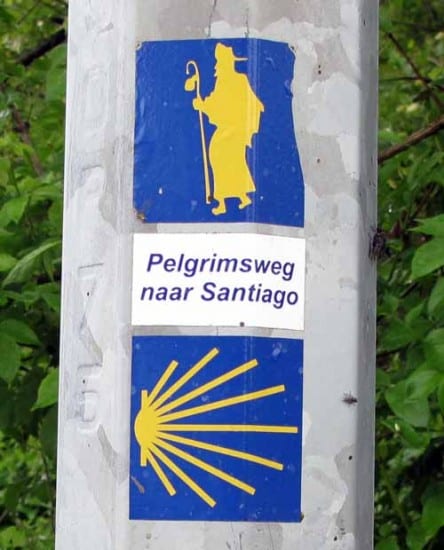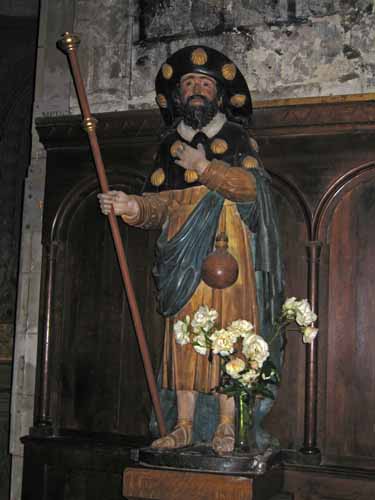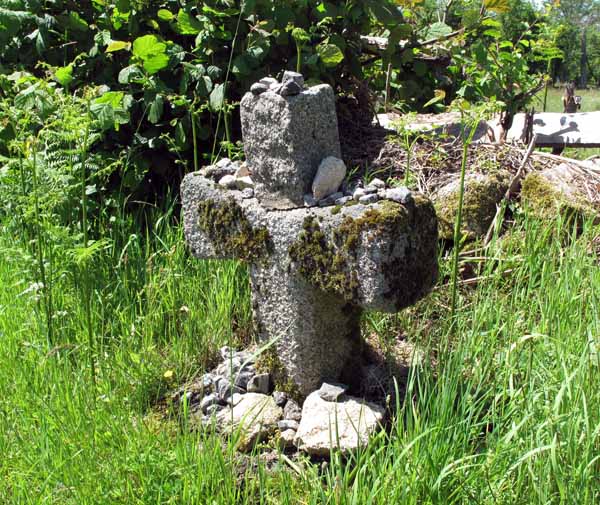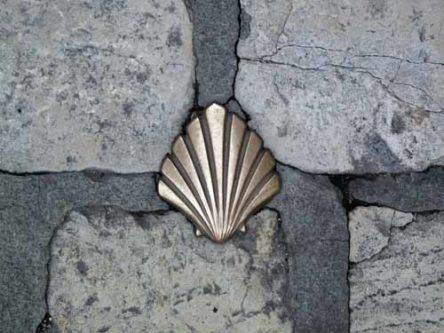The origins of the great pilgrimages of the middle ages lie in the belief that making the long journey to Rome, Jerusalem or Compostela would confer blessings, usually either good health or the forgiveness of sins.
Actually touching the relics of the saints in these places was a powerful defence against misfortune. Europe was (and still is) full of pilgrim sites harbouring various anatomical bits and pieces enshrined in elaborate gold caskets.
It had not taken long for people to realise the commercial value of the pilgrim trade – all along the route, travellers had to be supplied with food, accommodation, clothing, footwear and entertainment, and there was the prospect of donations from the wealthier pilgrims.
Consequently there was rivalry amongst monasteries to attract them. The most notorious example of this was the case of the 9th century monk from Conques, who stole the relics of the girl-saint Foy from their rightful home at Agen, making Conques a rich, famous pilgrimage destination and reducing Agen to a backwater.
The legend of Saint James (known as St Jacques in French and Santiago in Spanish) has a number of forms. He was one of the twelve apostles of Jesus, and after the death of his leader he was said to have gone to preach in Spain.
On his return to Judaea he was captured and beheaded by the Romans. In some accounts, his disciples brought his body to Spain and buried it. In a more florid version, he tucked his severed head under his arm, rowed himself back to Spain, walked to Compostela and buried himself there.
Saint Jacques is usually depicted carrying a “bourdon” (stout staff) and a drinking gourd. His symbol is the cockle-shell, or scallop, a species native to the coastline of Finisterre, where he came ashore. Once again there are various explanations for this symbol. One is that the whole notion of a pilgrimage to Spain took over from an earlier non-Christian tradition, in which the journey was a sort of fertility ritual. This involved Venus, goddess of procreation, whose symbol was the cockle-shell.
A more colourful version had Saint Jacques on horseback, being pursued by a group of Roman soldiers. He came to a wide estuary that he could not cross, but the cockle-shells rose to the surface and arranged themselves so that the saint’s horse could gallop over on them, whereupon they obligingly sank before his pursuers could do the same.
Whatever the case, his resting place was ignored for 800 years. His glory days began in the ninth century with the “discovery” of his tomb in north-west Spain. This was convenient timing, as Spain was in the throes of expelling the Moors, in a sort of holy war that prefigured the Crusades, and Saint James was credited with bringing about several military victories. Little wonder that he became such a magnet for pilgrims.
The first visitors from across the Pyrenees were recorded in the mid tenth century. Not long afterwards, the crusades to the Holy Land began, and Jerusalem became a battlefield, Pilgrims were not so keen to go there, so they turned their attention to the newer and more accessible Compostela instead.
The heyday for these pilgrimages was the twelfth century, when as many as a million people a year flocked to the tomb.
Pilgrims arriving at Compostela were given a cockle-shell as proof of their achievement, and these were great status symbols. This being the case, it was only to be expected that a trade would start up, selling cockle-shells to people who had not actually done the pilgrimage.
These false cockle-shells were not the Atlantic species, but a rather different Mediterranean one, easier to obtain. Since many nobles and persons of substance were buried with their cockle-shells, it is possible today to work out which ones were genuine pilgrims and which were cheats.
Although it was customary for pilgrims to set out from their own front door, they tended to accumulate at certain points and travel in groups on fairly well-defined routes that took advantage of the facilities springing up along the way. They were guided by a series of stone crosses, many of which survive today. It was customary for passing pilgrims to place a pebble on each cross as a sign of piety.
The four principal pilgrimage routes
You can read a diary of our experiences on each of these walking routes by clicking on the link.
The Way of St James (Via Podiensis)
Starting in le Puy, it is the traditional route for pilgrims from Switzerland and eastern France, and by far the most popular for modern pilgrims. This is the one which is normally referred to in English as the Way of Saint James, although all four are strictly speaking Ways of Saint James.
The Way of Vézelay (Via Lemovicensis)
Used by pilgrims coming from north-eastern France, Germany and Belgium. The Latin name refers to Limoges, one of the most important pilgrim sites along the way.
The Way of Arles (Via Tolosana)
The main route for pilgrims coming from the south of France and Italy. The Latin name refers to Toulouse, the biggest town on the route.
The Way of Tours (Via Turonensis)
Used by pilgrims from the Netherlands and the Paris basin. English pilgrims often joined this route via Angers.
Enthusiasm for pilgrimages waned as the plague and the Hundred Years’ War made travelling more hazardous, and it is only in recent times that pilgrimages have become popular again. For this, a lot of the credit must go to the FFRP (the French Walking Club), who have signposted the routes, known as Grandes Randonnées or GRs, and published guidebooks full of excellent historical information (see Maps and Guides).




